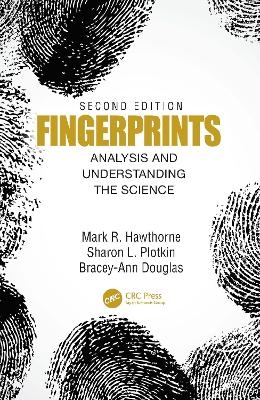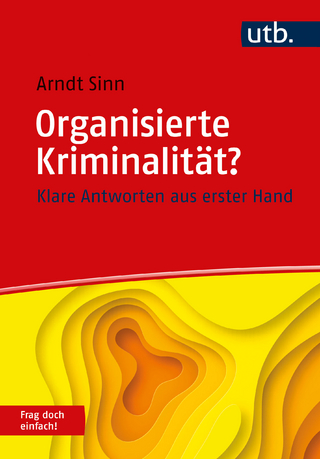
Fingerprints
CRC Press (Verlag)
978-0-367-47950-3 (ISBN)
- Titel z.Zt. nicht lieferbar
- Versandkostenfrei
- Auch auf Rechnung
- Artikel merken
Fingerprints: Analysis and Understanding the Science, Second Edition is a thorough update of Mark Hawthorne’s classic written by two professionals with combined experience not only in crime scene investigations but also as court-recognized experts in latent print examination. Designed as a concise text to cover the fundamental techniques and principles of obtaining and analyzing latent fingerprint evidence, the book is laid out and written in an easy to understand format for those front-line professionals collecting and analyzing fingerprint evidence.
Over time, the degree of sophistication and education on fingerprints and friction ridge analysis has increased. Ultimately, through scientific study by pioneers in the field, the composition of friction skin soon became evident: that it could be used as a unique identifier of individuals. Now, fingerprints and footprints as unique identifiers—and their use in criminal cases—have become commonplace and an essential component of criminal investigation with most cases involving some component of fingerprint evidence.
Divided into two parts, the book begins with the basics of analysis, providing a brief history, systematic methods of identification, fingerprint pattern types and their associated terminologies and current classifications. The second part of the book discusses the identification and presentation of evidence in the courtroom, demonstrating both the traditional, manual method of lifting prints and the newer techniques for automated and live scans. Coverage provides instruction on searching and developing latent prints, storage, and comparison of prints.
New to this edition are updated techniques on collecting and preserving fingerprint evidence—including packaging and maintaining chain of custody. More detailed documentation processes, and additional chemical and lifting techniques, are described including use of light sources, latent backing cards and lifting material, casting material, ten print cards, and the enhancement of prints in blood. A discussion of laboratory equipment and comparison tools, the addition of photography techniques, and recent courtroom challenges to fingerprint evidence is also presented.
Fingerprints, Second Edition will provide a hands-on, fresh look at the most commonly utilized evidence found at crime scenes: fingerprints. The book will provide law enforcement, crime scene personnel and students just such an opportunity to easily understand and grasp the concepts, and relevant issues, associated with friction skin and fingerprint evidence.
Mark R. Hawthorne, now retired, was a professor and faculty member at the City College of San Francisco, where he began teaching in 1985 in the Administration of Justice programs and has also served as the coordinator of the forensic science program in criminal justice. In addition, he was an instructor at Sky-line College in San Bruno, California and taught at other universities and colleges since 1985. Mr. Hawthorne possesses an Associate of Arts, Bachelor of Arts and Master’s degrees. He was previously the lead instructor in physical evidence and crime scenes at the San Francisco Police Regional Training Academy. Mark is also a retired member of the San Francisco Police Department after serving with distinction for twenty-nine years, the last twenty-three as a crime scene investigator. During his career, Mark has processed more than three thousand crime scenes, has processed thousands of pieces of evidence and has testified as an expert witness numerous times in California state courts as well as U.S. district courts. Mark has conducted thousands of fingerprint comparisons and has made in excess of three thousand identifications. Mark is also an I.A.I. Certified Latent Print Examiner as well as a Certified Senior Crime Scene Analyst. Mark is also a recognized subject matter expert by the State of California Commission on Peace Officer Standards and Training in subject matter of physical evidence and crime scenes. Mark has made numerous presentations to various forensic organizations and meetings and is a published author (First Unit Responder: A Guide for the Physical Evidence Collection for Patrol Officers.) He also mentored and assisted countless students achieve the goal in the Forensic Science field. Sharon L. Plotkin obtained her Masters of Science degree in Criminal Justice with a minor in Psychology from Florida International University. She obtained her Bachelor of Science degree in Social Work, also from Florida International University and an Associate of Arts degree in Psychology from Broward Community College. Ms. Plotkin received her certification through the International Association for Identification in 2006 and has been doing crime scene work for almost 20 years. She has handled thousands of cases ranging from burglaries to homicides and suspicious death cases. Ms. Plotkin has a passion for teaching and loves the opportunity to excite students in wanting to embark on a career in law enforcement. She has been teaching at the college level for almost 13 years. She is full-time faculty at the largest school in the nation that currently has 165,000 students enrolled, teaching in the crime scene technology degree program. Ms. Plotkin has received specialized training in various fields of crime scene investigations, including bloodstain reconstruction, photography, crime scene reconstruction, fingerprinting, and shoe wear casting. She has had the opportunity to be involved in casework with Dr. Henry Lee, assisting in crime scene reconstruction. Some of her cases have appeared on Court TV. Ms. Plotkin is also a member of DMORT (Disaster Mortuary Operational Response Team). Bracey-Ann Douglas is a Police Officer in the Miami-Dade County Police Department. She worked previously in the County Corrections and Rehabilitation Department in the Fingerprint Section as a Fingerprint Analyst. Prior to that, she was a Crime Scene Technician with the North Miami Police Department’s Crime Scene Unit. She is currently an Adjunct Faculty Professor in the Miami Dade College’s North Campus School of Justice providing classroom instruction, curriculum development, and supervisor for students’ field experience and internships. Ms. Douglas holds a Master of Science in Management with a Concentration in Criminal Justice Administration, and a Bachelor of Applied Science in Public Safety Management with Concentration in Crime Scene Investigations from Miami Dade College.
Preface. Acknowledgements. About the Authors. Part I: Fingerprints Analysis. Chapter 1 – The History of Fingerprints. Chapter 2 – Systematic Methods of Identification. Chapter 3 – Fingerprint Pattern Types and Associated Terminology. Chapter 4 – Introduction to Classification Systems. Part II: Development, Identification, and Presentation of Fingerprints. Chapter 5 – Known/Direct/Inked Fingerprints; Processing Technique for Unknown/Latent Fingerprints. Chapter 6 – Court Preparation and Presentation. Appendix A. Appendix B. Appendix C. Bibliography. Index.
| Erscheinungsdatum | 10.05.2021 |
|---|---|
| Zusatzinfo | 2 Tables, black and white; 26 Line drawings, black and white; 195 Halftones, black and white; 221 Illustrations, black and white |
| Verlagsort | London |
| Sprache | englisch |
| Maße | 156 x 234 mm |
| Gewicht | 480 g |
| Themenwelt | Naturwissenschaften ► Biologie |
| Recht / Steuern ► EU / Internationales Recht | |
| Recht / Steuern ► Strafrecht ► Kriminologie | |
| Sozialwissenschaften | |
| ISBN-10 | 0-367-47950-8 / 0367479508 |
| ISBN-13 | 978-0-367-47950-3 / 9780367479503 |
| Zustand | Neuware |
| Informationen gemäß Produktsicherheitsverordnung (GPSR) | |
| Haben Sie eine Frage zum Produkt? |
aus dem Bereich


